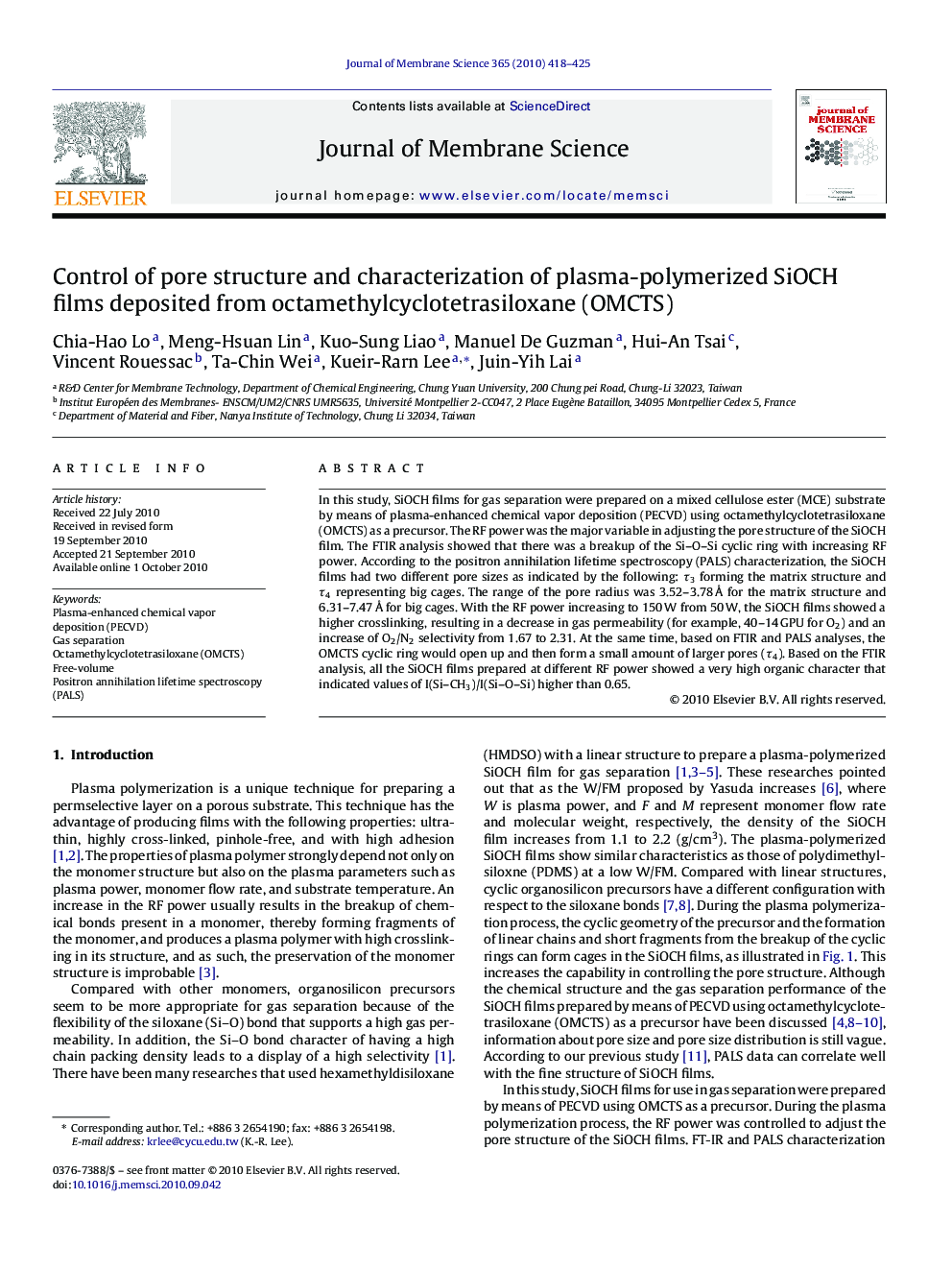| Article ID | Journal | Published Year | Pages | File Type |
|---|---|---|---|---|
| 636126 | Journal of Membrane Science | 2010 | 8 Pages |
In this study, SiOCH films for gas separation were prepared on a mixed cellulose ester (MCE) substrate by means of plasma-enhanced chemical vapor deposition (PECVD) using octamethylcyclotetrasiloxane (OMCTS) as a precursor. The RF power was the major variable in adjusting the pore structure of the SiOCH film. The FTIR analysis showed that there was a breakup of the Si–O–Si cyclic ring with increasing RF power. According to the positron annihilation lifetime spectroscopy (PALS) characterization, the SiOCH films had two different pore sizes as indicated by the following: τ3 forming the matrix structure and τ4 representing big cages. The range of the pore radius was 3.52–3.78 Å for the matrix structure and 6.31–7.47 Å for big cages. With the RF power increasing to 150 W from 50 W, the SiOCH films showed a higher crosslinking, resulting in a decrease in gas permeability (for example, 40–14 GPU for O2) and an increase of O2/N2 selectivity from 1.67 to 2.31. At the same time, based on FTIR and PALS analyses, the OMCTS cyclic ring would open up and then form a small amount of larger pores (τ4). Based on the FTIR analysis, all the SiOCH films prepared at different RF power showed a very high organic character that indicated values of I(Si–CH3)/I(Si–O–Si) higher than 0.65.
Research highlights▶ SiOCH films for gas separation were prepared by PECVD using OMCTS. ▶ FT-IR and PALS characterization were used to understand the influence of the chemical structure on the pore structure. ▶ Based on FTIR and PALS analyses, the OMCTS cyclic ring would open up and then formed a small amount of larger pores (τ4).
